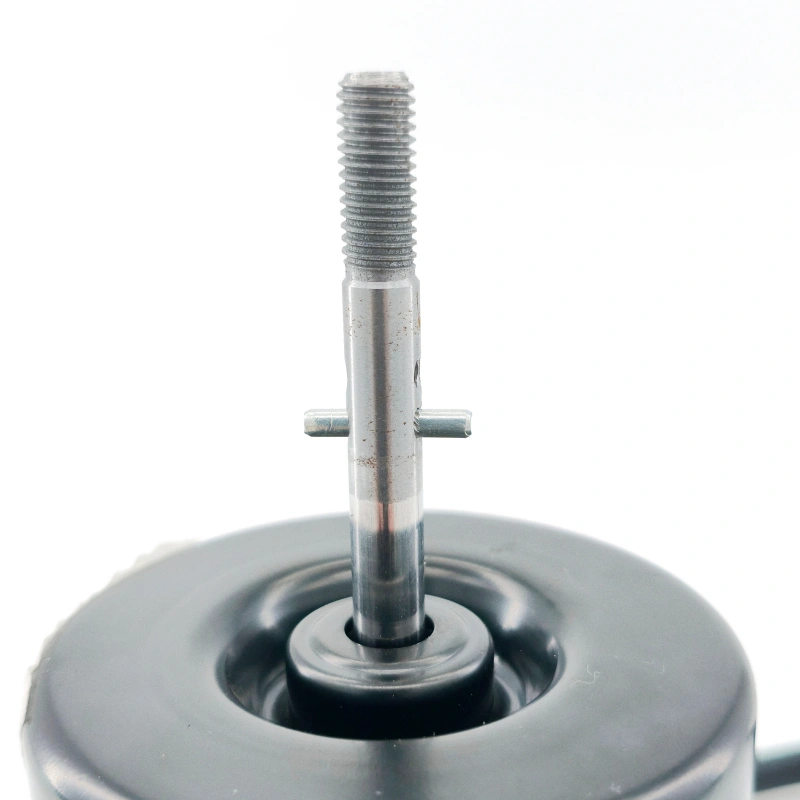I. Core Differences: From Working Principles to Key Characteristics
AC motors are divided into synchronous motors and asynchronous motors (also known as induction motors). The core difference between the two stems from the relationship between the rotor speed and the rotational speed of the stator’s rotating magnetic field, which further determines their differences in structure and performance.
1. Speed Relationship: The Essential Definition of Synchronism and Asynchronism
According to the principle of electromagnetic induction, when alternating current is applied to the stator windings, a rotating magnetic field is generated. The speed of this magnetic field (synchronous speed, n₀) is determined by the power supply frequency (f) and the number of motor pole pairs (p), as given by the formula: n₀ = 60f/p.
- Synchronous Motors: The rotor speed (n) is exactly equal to the synchronous speed (n₀) (i.e., n = n₀). The rotor requires an additional excitation source (such as permanent magnets or an excitation winding supplied with direct current) to generate a fixed magnetic field, which “synchronously follows” the rotation of the stator’s rotating magnetic field. There is no slip ratio (s = (n₀ – n)/n₀ = 0).
- Asynchronous Motors: The rotor speed (n) is always lower than the synchronous speed (n₀) (i.e., n < n₀), resulting in a slip ratio (typically s = 0.01 – 0.05). The rotor does not require an additional excitation source; instead, it relies on the stator’s rotating magnetic field to cut the rotor conductors, inducing an electric current and generating electromagnetic torque to drive the rotor. Slip is a necessary condition for torque generation.
2. Structure and Performance: Specific Manifestations of Extended Differences
- Structural Complexity: Synchronous motors have a more complex structure and higher manufacturing costs due to the need for excitation devices (such as permanent magnets, excitation windings, or slip rings). In contrast, asynchronous motors have a rotor consisting only of cast aluminum or copper bar windings, with no excitation components, resulting in a simple structure, low cost, and easier maintenance.
- Efficiency and Power Factor: By adjusting the excitation current, synchronous motors can achieve a power factor of 1 or even leading, which helps improve the power factor of the power grid. They also have higher efficiency under rated loads (usually 3% – 5% higher than asynchronous motors of the same power). Asynchronous motors, however, always have a lagging power factor (typically 0.7 – 0.9), and their efficiency drops significantly under light loads (e.g., at 30% load rate, efficiency is only about 50% of that under rated load).
- Speed Regulation Characteristics: The speed of synchronous motors strictly follows the frequency and can only be adjusted via frequency conversion, resulting in a relatively narrow speed regulation range (usually dependent on high-precision frequency conversion control). Asynchronous motors can be speed-regulated through voltage variation, frequency conversion, and other methods; their speed regulation technology is mature and suitable for medium-to-low precision speed regulation scenarios.
II. Application Selection: Matching Characteristics to Scenario Requirements
In practical applications, the choice between synchronous and asynchronous motors should be based on factors such as load requirements, energy efficiency needs, and cost budgets. Specific scenario adaptations are as follows:
1. Synchronous Motors: Suitable for High-Precision, High-Demand Scenarios
- High-Precision Speed Control Scenarios: Applications such as spinning spindles in textile machinery and main shafts in precision machine tools require constant speed (no speed fluctuation). The speed of synchronous motors is strictly synchronized with the frequency, and under frequency conversion control, the speed precision can reach ±0.1%, avoiding speed drift caused by the slip ratio of asynchronous motors and ensuring yarn uniformity and machine tool processing accuracy.
- High-Power, Energy-Efficient Scenarios: Examples include turbine generators in large thermal power plants and industrial compressors (usually with power ≥ 1000 kW). Synchronous motors offer high efficiency and adjustable power factors. For a 1000 kW compressor, for instance, a synchronous motor consumes approximately 120,000 fewer kWh of electricity annually (calculated based on 8000 operating hours per year and a 1.5% efficiency difference) compared to an asynchronous motor. Additionally, they can offset lagging reactive power in the power grid, reducing grid losses.
- Special Low-Speed Scenarios: Large hydroelectric generators (with speeds typically < 100 r/min) fall into this category. Synchronous motors can reduce the synchronous speed by increasing the number of pole pairs (e.g., p = 30) without the need for additional speed reduction devices. In contrast, asynchronous motors have a significantly increased slip ratio at low speeds, leading to extremely low efficiency and requiring complex speed reduction mechanisms, which increases costs and failure risks.
2. Asynchronous Motors: Suitable for General-Purpose, Low-Cost Scenarios
- Medium-and-Low-Power General-Drive Scenarios: These include household air conditioning compressors and industrial conveyor motors (usually with power < 100 kW). Such scenarios have low requirements for speed precision (allowing a speed fluctuation of ±1%). Asynchronous motors have a simple structure, cost only 60% – 70% of that of synchronous motors of the same power, and are easy to maintain (no wear on excitation components), making them capable of meeting basic driving needs.
- Frequent Start-Up and Variable Load Scenarios: Applications like elevator traction machines and small-to-medium fans (requiring frequent start-stop operations or load fluctuations) are typical. Asynchronous motors have moderate starting torque (usually 1.5 – 2 times the rated torque), and their starting current can be controlled via soft starters, making them suitable for frequent start-stop cycles. Synchronous motors, however, require additional devices (such as damping windings) to overcome “loss of synchronization” during start-up, resulting in complex start-up control and making them unsuitable for frequent start-stop scenarios.
- Low-Cost, Easy-Maintenance Scenarios: Agricultural irrigation pumps and small machine tools (with limited budgets and simple maintenance conditions) belong here. Asynchronous motors have no vulnerable components such as slip rings or excitation windings, with a Mean Time Between Failures (MTBF) of over 20,000 hours. In contrast, synchronous motors face issues such as permanent magnet aging and excitation winding failures, which require professional maintenance and increase long-term costs.
III. Conclusion: Core Principles of Selection Logic
The choice between synchronous and asynchronous motors essentially involves balancing “performance requirements” and “cost-effectiveness”. If high precision, high efficiency, and high power are required with a sufficient budget, synchronous motors are preferred. For general-purpose driving, medium-and-low power needs, low costs, and limited maintenance conditions, asynchronous motors are the better choice. Currently, due to their cost-effectiveness advantages, asynchronous motors account for approximately 80% of the AC motor market (e.g., in home appliances and small-to-medium industrial equipment). Synchronous motors, however, are irreplaceable in high-end industrial and energy sectors. The two types complement each other to meet the driving needs of different scenarios.




